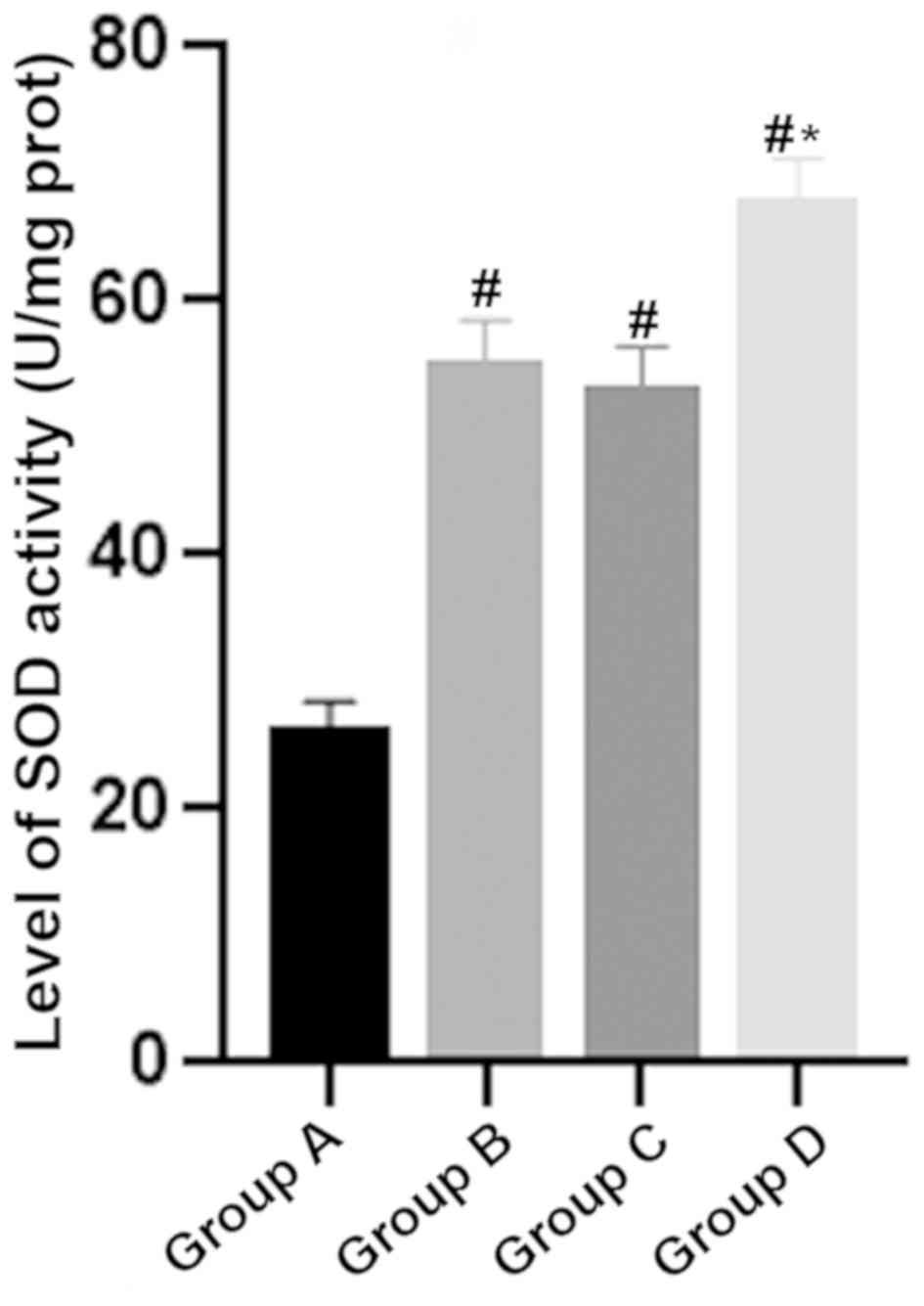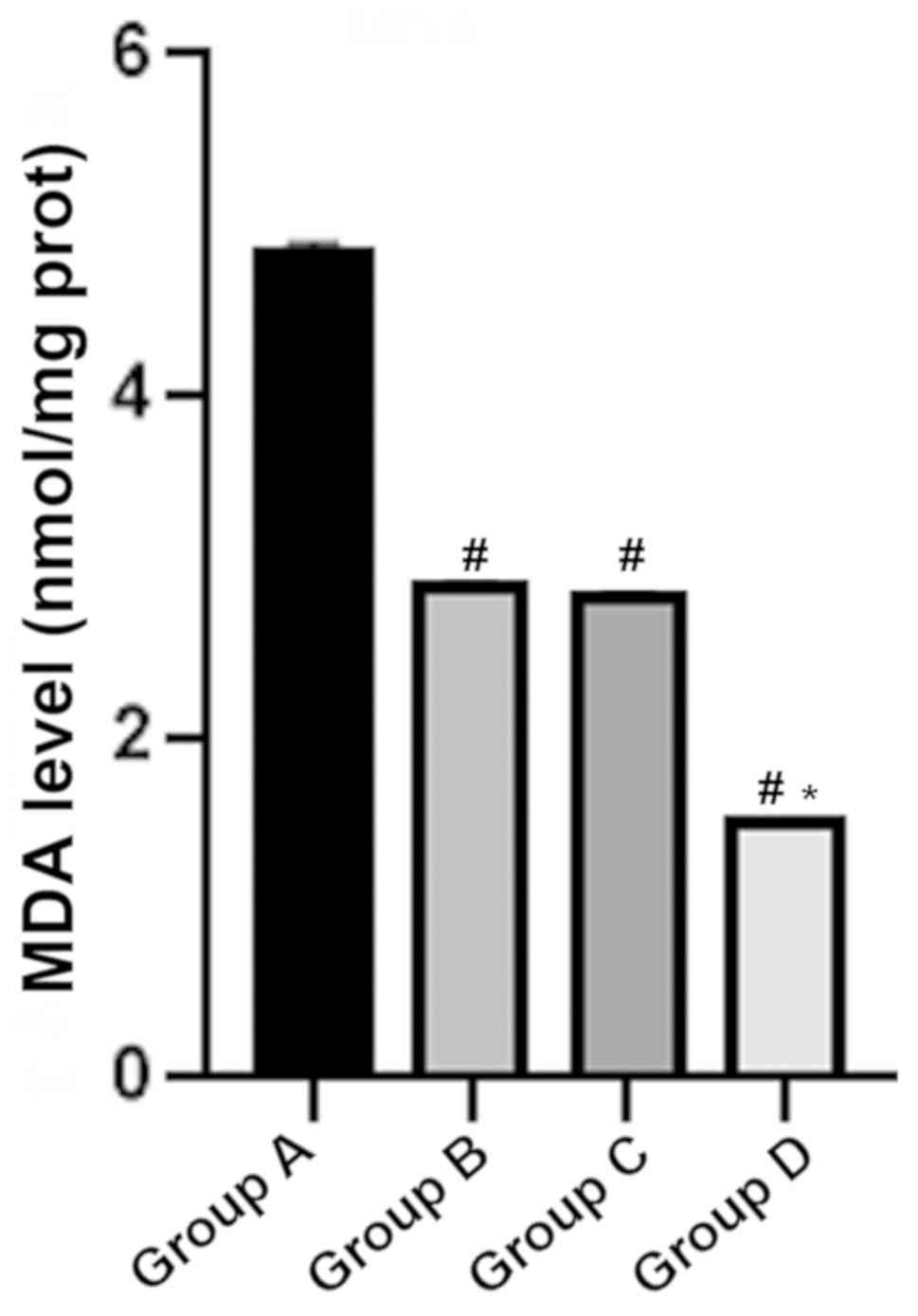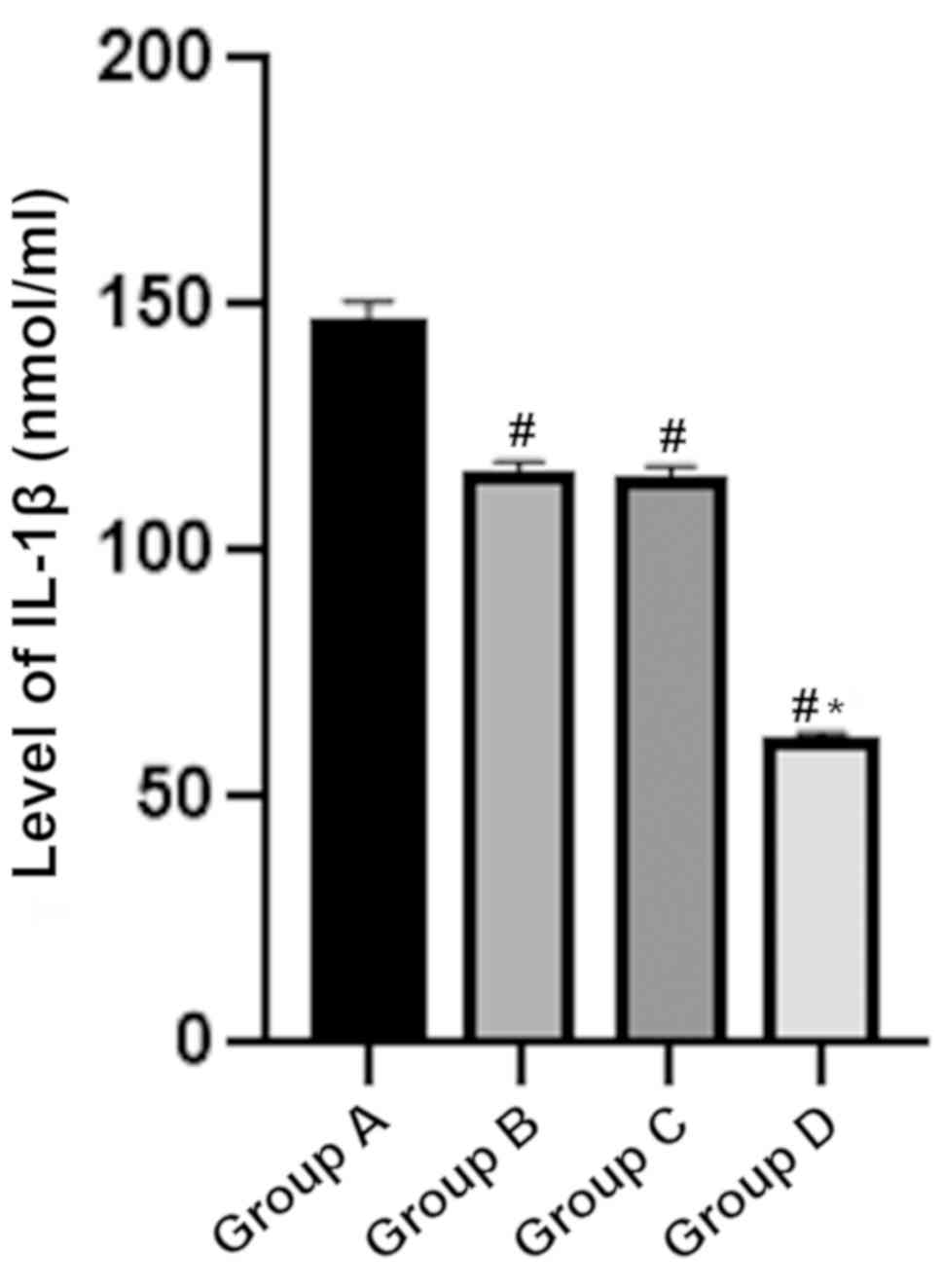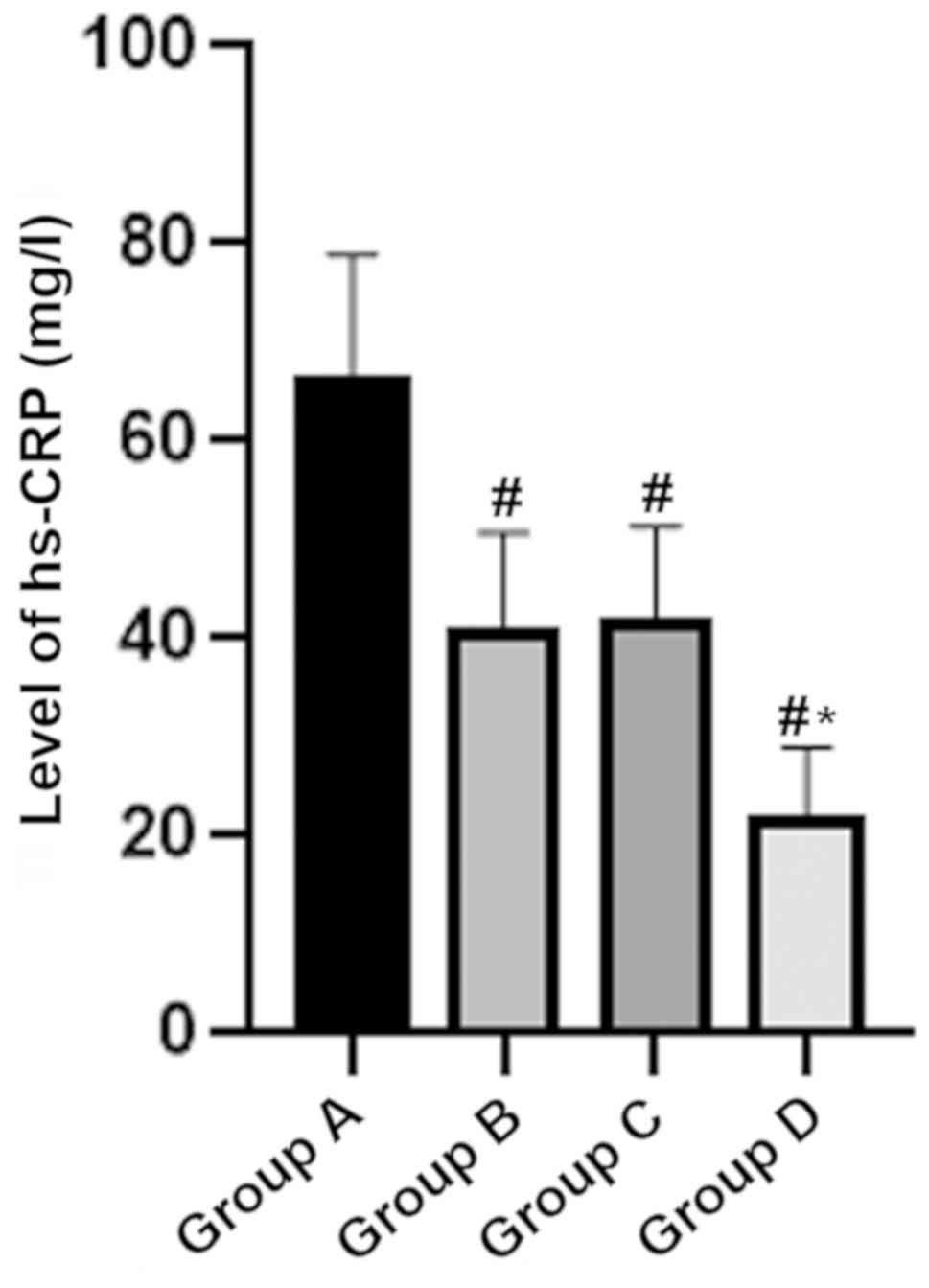|
1
|
Karaguzel E, Kadihasanoglu M and Kutlu O:
Mechanisms of testicular torsion and potential protective agents.
Nat Rev Urol. 11:391–399. 2014.PubMed/NCBI View Article : Google Scholar
|
|
2
|
Zhao LC, Lautz TB, Meeks JJ and Maizels M:
Pediatric testicular torsion epidemiology using a national
database: Incidence, risk of orchiectomy and possible measures
toward improving the quality of care. J Urol. 186:2009–2013.
2011.PubMed/NCBI View Article : Google Scholar
|
|
3
|
Boettcher M, Bergholz R, Krebs TF, Wenke K
and Aronson DC: Clinical predictors of testicular torsion in
children. Urology. 79:670–674. 2012.PubMed/NCBI View Article : Google Scholar
|
|
4
|
Waldert M, Klatte T, Schmidbauer J, Remzi
M, Lackner J and Marberger M: Color Doppler sonography reliably
identifies testicular torsion in boys. Urology. 75:1170–1174.
2010.PubMed/NCBI View Article : Google Scholar
|
|
5
|
Hsiao CH, Ji AT, Chang CC, Chien MH, Lee
LM and Ho JH: Mesenchymal stem cells restore the sperm motility
from testicular torsion-detorsion injury by regulation of glucose
metabolism in sperm. Stem Cell Res Ther. 10(270)2019.PubMed/NCBI View Article : Google Scholar
|
|
6
|
Yang C, Song B, Tan J, Liu X and Wei GH:
Testicular torsion in children: A 20-year retrospective study in a
single institution. ScientificWorldJournal. 11:362–368.
2011.PubMed/NCBI View Article : Google Scholar
|
|
7
|
Ghasemnejad-Berenji M, Ghazi-Khansari M,
Yazdani I, Saravi SS, Nobakht M, Abdollahi A, Ansari JM,
Ghasemnejad-Berenji H, Pashapour S and Dehpour AR: Rapamycin
protects testes against germ cell apoptosis and oxidative stress
induced by testicular ischemia-reperfusion. Iran J Basic Med Sci.
20:905–911. 2017.PubMed/NCBI View Article : Google Scholar
|
|
8
|
Ozkisacik S, Erdem AO, Durmaz O, Culhaci
N, Gursoy H and Yazici M: The long-term protective effects of
short-interval postconditioning in testicular ischemia-reperfusion
injury in rats. J Pediatr Surg. 47:743–746. 2012.PubMed/NCBI View Article : Google Scholar
|
|
9
|
Li HC, Zhang C, Liu CM, Hu WB, Qian BJ,
Lin MC and Zhang JB: Effects of hypothermia plus dexamethasone on
eNOS expression and spermatogenic cell apoptosis after testicular
torsion reduction. Zhonghua Nan Ke Xue. 19:218–222. 2013.PubMed/NCBI(In Chinese).
|
|
10
|
Lyronis ID, Ploumis N, Vlahakis I and
Charissis G: Acute scrotum-etiology, clinical presentation and
seasonal variation. Indian J Pediatr. 76:407–410. 2009.PubMed/NCBI View Article : Google Scholar
|
|
11
|
Glauert HP: Vitamin E and NF-kappaB
activation: A review. Vitam Horm. 76:135–153. 2007.PubMed/NCBI View Article : Google Scholar
|
|
12
|
Abd-El-Fattah AA, El-Sawalhi MM, Rashed ER
and El-Ghazaly MA: Possible role of vitamin E, coenzyme Q10 and
rutin in protection against cerebral ischemia/reperfusion injury in
irradiated rats. Int J Radiat Biol. 86:1070–1078. 2010.PubMed/NCBI View Article : Google Scholar
|
|
13
|
Ranade AV, Tripathi Y, Rajalakshmi R,
Vinodini NA, Soubhagya RN, Nayanatara AK, Rekha DK and Kumari M:
Effect of vitamin E administration on histopathological changes in
rat testes following torsion and detorsion. Singapore Med J.
52:742–746. 2011.PubMed/NCBI
|
|
14
|
Adekeye AO, Akintayo CO, Sanya JO and Enye
LA: Testicular torsion following reperfusion injury in rat model:
Can vitamin E palliate this injury? J Mod Drug Discovery Drug Deliv
Res. 2:1–3. 2015.
|
|
15
|
Turner TT, Tung KS, Tomomasa H and Wilson
LW: Acute testicular ischemia results in germ cell-specific
apoptosis in the rat. Biol Reprod. 57:1267–1274. 1997.PubMed/NCBI View Article : Google Scholar
|
|
16
|
Wang Y, Ma L, Wang X and Qin L:
Differential modulation of the auditory steady state response and
inhibitory gating by chloral hydrate anesthesia. Sci Rep.
8(3683)2018.PubMed/NCBI View Article : Google Scholar
|
|
17
|
Tusat M, Mentese A, Demir S, Alver A and
Imamoglu M: Medical ozone therapy reduces oxidative stress and
testicular damage in an experimental model of testicular torsion in
rats. Int Braz J Urol. 43:1160–1166. 2017.PubMed/NCBI View Article : Google Scholar
|
|
18
|
Li XD, Sun GF, Zhu WB and Wang YH: Effects
of high intensity exhaustive exercise on SOD, MDA, and NO levels in
rats with knee osteoarthritis. Genet Mol Res. 14:12367–12376.
2015.PubMed/NCBI View Article : Google Scholar
|
|
19
|
Ozbal S, Ergur BU, Erbil G, Tekmen I,
Bagrıyanık A and Cavdar Z: The effects of α-lipoic acid against
testicular ischemia-reperfusion injury in rats.
ScientificWorldJournal. 2012(489248)2012.PubMed/NCBI View Article : Google Scholar
|
|
20
|
Yang X, Zhao J, He Y and Huangfu X:
Screening for characteristic genes in osteoarthritis induced by
destabilization of the medial meniscus utilizing bioinformatics
approach. J Musculoskelet Neuronal Interact. 14:343–348.
2014.PubMed/NCBI
|
|
21
|
Deliktaş M, Ergin H, Demiray A, Akça H,
Özdemir ÖMA and Özdemir MB: Caffeine prevents bilirubin-induced
cytotoxicity in cultured newborn rat astrocytes. J Matern Fetal
Neonatal Med. 32:1813–1819. 2019.PubMed/NCBI View Article : Google Scholar
|
|
22
|
Biwas C, Bala J and Kharb S: Effect of
vitamin E supplementation on superoxide and malondialdehyde
generation in acute celphos poisoning. Arch Med Health Sci.
5(200)2017.
|
|
23
|
Liu X, Rao S and Wang J: Intravenous
thrombolysis in combination with mild hypothermia therapy in the
treatment of acute cerebral infarction. Pak J Med Sci.
35:1161–1166. 2019.PubMed/NCBI View Article : Google Scholar
|
|
24
|
Wu D, Jiang Z, Gong B, Dou Y, Song M, Song
X and Tian Y: Vitamin E reversed apoptosis of cardiomyocytes
induced by exposure to high dose formaldehyde during mice
pregnancy. Int Heart J. 58:769–777. 2017.PubMed/NCBI View Article : Google Scholar
|
|
25
|
Shimizu S, Tsounapi P, Dimitriadis F,
Higashi Y, Shimizu T and Saito M: Testicular torsion-detorsion and
potential therapeutic treatments: A possible role for ischemic
postconditioning. Int J Urol. 23:454–463. 2016.PubMed/NCBI View Article : Google Scholar
|
|
26
|
Taati M, Moghadasi M, Dezfoulian O,
Asadian P and Zendehdel M: Effects of Ghrelin on germ cell
apoptosis and proinflammatory cytokines production in
ischemia-reperfusion of the rat testis. Iran J Reprod Med.
13:85–92. 2015.PubMed/NCBI
|
|
27
|
Dogan C, Halici Z, Topcu A, Cadirci E,
Karakus E, Bayir Y and Selli J: Effects of amlodipine on
ischaemia/reperfusion injury in the rat testis. Andrologia.
48:441–452. 2016.PubMed/NCBI View Article : Google Scholar
|
|
28
|
Tettamanti L, Caraffa Al, Mastrangelo F,
Ronconi G, Kritas S, Frydas I and Conti P: Different signals induce
mast cell inflammatory activity: Inhibitory effect of vitamin E. J
Biol Regul Homeost Agents. 32:13–19. 2018.PubMed/NCBI
|
|
29
|
Tahan G, Aytac E, Aytekin H, Gunduz F,
Dogusoy G, Aydin S, Tahan V and Uzun H: Vitamin E has a dual effect
of anti-inflammatory and antioxidant activities in acetic
acid-induced ulcerative colitis in rats. Can J Surg. 54:333–338.
2011.PubMed/NCBI View Article : Google Scholar
|
|
30
|
Wassink G, Gunn ER, Drury PP, Bennet L and
Gunn AJ: The mechanisms and treatment of asphyxial encephalopathy.
Front Neurosci. 8(40)2014.PubMed/NCBI View Article : Google Scholar
|
|
31
|
Hsin MK, Iskender I, Nakajima D, Chen M,
Kim H, dos Santos PR, Sakamoto J, Lee J, Hashimoto K, Harmantas C,
et al: Extension of donor lung preservation with hypothermic
storage after normothermic ex vivo lung perfusion. J Heart Lung
Transplant. 35:130–136. 2016.PubMed/NCBI View Article : Google Scholar
|
|
32
|
Du X, Jiang S, Bo L, Liu J, Zeng X, Xie Y,
He Q, Ye X, Song W and Zhao J: Combined effects of vitamin E and
omega-3 fatty acids on protecting ambient PM2.5-induced
cardiovascular injury in rats. Chemosphere. 173:14–21.
2017.PubMed/NCBI View Article : Google Scholar
|
|
33
|
Shi ZR, Shang XJ, Kang N, Zhan XX, Xia XY,
Cui YX and Huang YF: Protective effect of L-carnitine combined with
sildenafil on the reproductive endocrine function of diabetic male
rats. Zhonghua Nan Ke Xue. 18:789–792. 2012.PubMed/NCBI(In Chinese).
|
|
34
|
Schulster M, Bernie AM and Ramasamy R: The
role of estradiol in male reproductive function. Asian J Androl.
18:435–440. 2016.PubMed/NCBI View Article : Google Scholar
|


















